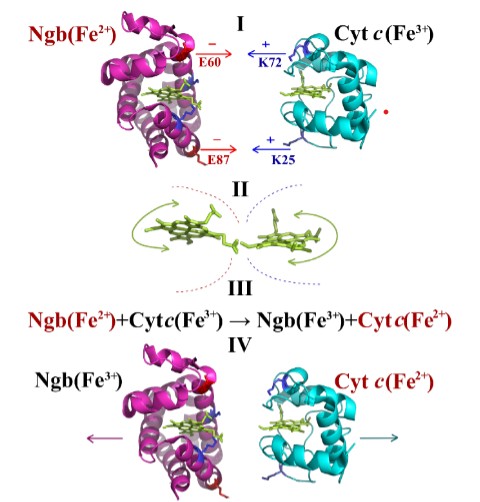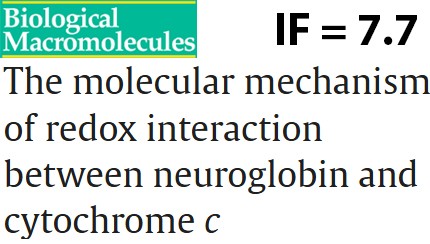Press-room / news / Science news /
The molecular mechanism of redox interaction between neuroglobin and cytochrome c
Neuroprotective activity of neuroglobin (Ngb) is presumably based on its redox interaction with cytochrome c (Cyt c), the mechanisms of which have not yet been elucidated. Authors developed a new methodological approach to study the electron transfer between heme proteins based on Raman spectroscopy. We studied the conformational changes in the Cyt c heme and the effect of the protein microenvironment of Cyt c and Ngb hemes on electron transfer between them using developed approach. Obtained data allowed us to propose a step-by-step mechanism of interaction between Ngb and Cyt c. Understanding the mechanisms of interaction between Ngb and Cyt c is necessary for future practical applications related to the therapy of neurodegenerative diseases.
Hypothesis exists that neuroglobin protein (Ngb) neuroprotective activity based on its redox interaction with cytochrome c (Cyt c), the mechanisms of which are still unclear. Authors developed a new methodological approach to study the redox reaction between heme proteins based on Raman spectroscopy. We applied the developed methodology to wild-type and mutant forms of Ngb and Cyt c to study conformational changes in the Cyt c heme during the redox reaction with Ngb. Furthermore, we studied the effect of the protein microenvironment of the Cyt c and Ngb hemes on the electron transfer between them. The data obtained allowed us to propose a mechanism for the redox interaction between Ngb and Cyt c, which consists of several steps (see Fig.): I. formation of the reaction complex mainly due to electrostatic interactions; II. conformational adjustment of hemes; III. electron transfer; IV. dissociation of the complex. Understanding the mechanisms of interaction between Ngb and Cyt c is necessary for future practical applications, such as the development of Ngb-based therapeutic agents for the treatment of neurodegenerative diseases and other pathophysiological conditions associated with neuronal cell death.
The results are published in the International Journal of Biological Macromolecules.

Figure. Proposed molecular mechanism of Ngb and Cyt c interaction (ID PDB: 4MPM–Ngb; 1HRC–Cyt c).
june 12


